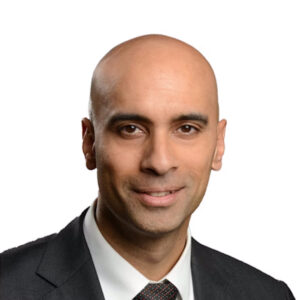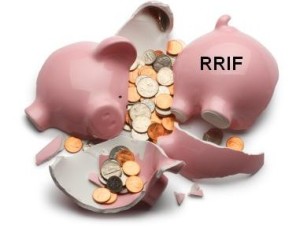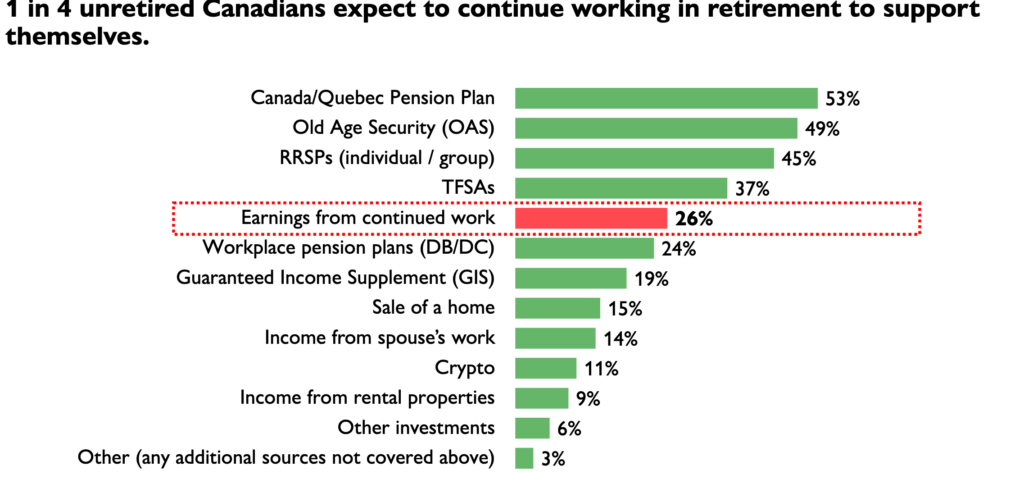
On Wednesday, BMO ETFs conducted its second annual ETF Investor day. Conducted at the Toronto Stock Exchange, Do-it-yourself investors and finfluencers [Financial Influencers] were on hand for the ceremonial opening of the exchange, shown in the photo on the left (including myself).
Hard to believe, but this marks BMO’s 16th year as a Canadian ETF provider.
Before we get to the individual expert picks from BMO’s large ETF stable, the morning began with the obligatory analysis of the current Trump-inspired global trade war, and its implications for the Canadian economy and stock market.
Economic Update
In an Economic update Amber Kanwar, Host of the In the Money Podcast interviewed Bipan Rai, Head of ETF & Structured Solutions Strategy at BMO ETFs. Rai said the protectionist measures being imposed by the Trump administration have “not been seen since the Great Depression.” In the U.S. tariffs are now north of 20%, or ten times the 2% average tariffs that were previously in place.
Asked what will happen next, Rai said probably one of three things: Trump might rescind the Tariffs, or there will be a massive expansion of U.S. fiscal policy to fund its Tax Cuts, or the Federal Reserve will cut rates. But he doesn’t think a U.S. recession will show up this year, as its economy is “too dynamic.”

However, Rai was less confident that Canada won’t face a Recession: “I’m very concerned about the Canadian economy in coming quarters.” The two most recent scenarios from the Bank of Canada are mixed: one is “far more benign,” the second “more malignant.” He thinks the former is more likely, with a few negative quarters of GDP growth but not likely exhibiting Stagflation risk. 70% of Canada’s GDP is generated from trade, “most of it with the U.S. As much as [Prime Minister Mark] Carney talks about diversifying away from the U.S., that’s not going to happen. The U.S. is way too big and is right next door. We may do more with the United Kingdom but it and the European Union won’t replace the U.S. Jobs may be lost, especially in the auto sector.”
Asked if he expects more rate cuts from central banks around the world, Rai said he thinks the BOC is likely closer to the end, with one or two more rate cuts, after which fiscal stimulus will kick in. England or the ECB may cut a few more times, then Japan and a few “others divorced from the rest.”
How retail investors can play Defence
Kanwar also probed the views of two experts in a session titled Playing Defense: Positioning Your Portfolio in today’s environment. Now that the U.S. market has rebounded 18% from the lows around early April’s Liberation Day, Kanwar asked how Do-it-yourself [DIY] investors can deal with volatility. Jimmy Xu, Head of Liquid Alternatives & Non-linear solutions, BMO ETFs, said it depends on investor goals. Those with a long-term 20- or 30-year time horizon before Retirement would be “best to sit tight,” Xu said, “Overtrading is the enemy of growing assets and market timing is hard.”
Freelance writer Tony Dong, founder of ETF Portfolio Blueprint, said volatility is the price of admission to create investment returns that are superior to risk-free treasury bills. Betting on certain sectors may expose DIY investors to uncompensated risk, Dong said. Even equal-weight products provide imperfect exposure to the size premium commanded by small- and mid-cap stocks. But investors can overweight less volatile stocks concentrated in structurally defensive sectors like health care, utilities and consumer staples. Jimmy Xu said sector-agnostic low-volatility strategies can help investors get around this problem. BMO’s low-volatility ETFs own low-volatility stocks that have a low beta relative to the broad market, which amounts to “a better tool than picking top sectors.” Continue Reading…






